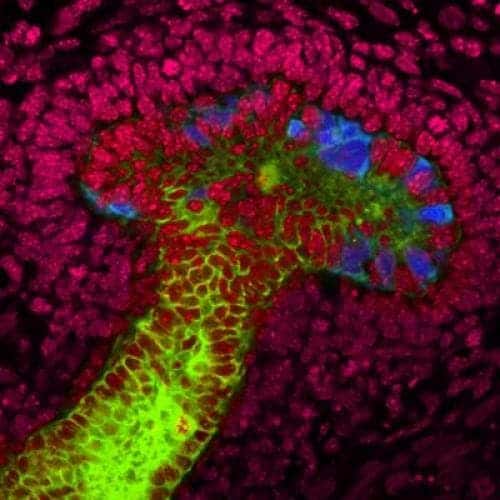Scientists at the Salk Institute for Biological Studies have for the first time coaxed human stem cells into forming three-dimensional cellular structures similar to those found in our kidneys. The breakthrough could provide a valuable footing for upcoming work that might eventually lead to fully functioning lab-grown kidneys, based on patients’ own cells for bio-compatibility. In its current stage, lab-grown kidney-like structures such as the one developed by Salk researchers can be effectively used today as test beds for various kind of drugs.
In the U.S. alone some 4.4 million people are suffering from some form of kidney disease. Unlike other vital organs, the kidney rarely recover function once its damaged by disease; typically a transplant is required, and while treatment can alleviate symptoms and make life manageable, patients still need to make the plunge to surgery. Transplants are far too few for the current demand – growing bio-compatible kidneys would be a solution, and as you might imagine it’s an extremely challenging task.

Previous methods have had limited success, however the present attempt successfully morphs human stem cells into well-organized 3D structures of the ureteric bud (UB), which later develops into the collecting duct system. Ureteric bud cells are responsible for reabsorbing water after toxins have been filtered out and during embryonic development in the womb, later develop into a conduit for urine drainage from the kidney. This was achieved using both human embryonic stem cells and induced pluripotent stem cells (iPSCs) – adult cells, like those harvested from the skin for instance, that are manipulated to behave like natural stem cells and thus later differentiate into any kind of cell.
[RELATED] First bio-engineered kidney works after transplant in rats
First the researchers stimulated the stem cells or iPSCs to developed into mesoderm, a germ cell layer from which the kidneys develop using growth factors – cells that signal and offer cues to stem cells to differentiate into desired types of cells. In this instance, the researchers used mouse cells as growth factors.
The team tested their method by developing three-dimensional structures of the kidney via iPSCs harvested from a patient clinically diagnosed with polycystic kidney disease (PKD) , a genetic disorder which can lead to kidney failure. So far, neither gene- nor antibody-based therapies have proven to treat PKD, however using their methodology it may be possible for pharmaceutical companies and other investigators studying drug-based therapeutics for PKD and other kidney diseases.
“Our differentiation strategies represent the cornerstone of disease modeling and drug discovery studies,” says lead study author Ignacio Sancho-Martinez, a research associate in Izpisua Belmonte’s laboratory. “Our observations will help guide future studies on the precise cellular implications that PKD might play in the context of kidney development. ”
Findings appeared in the journal Nature Cell Biology.






